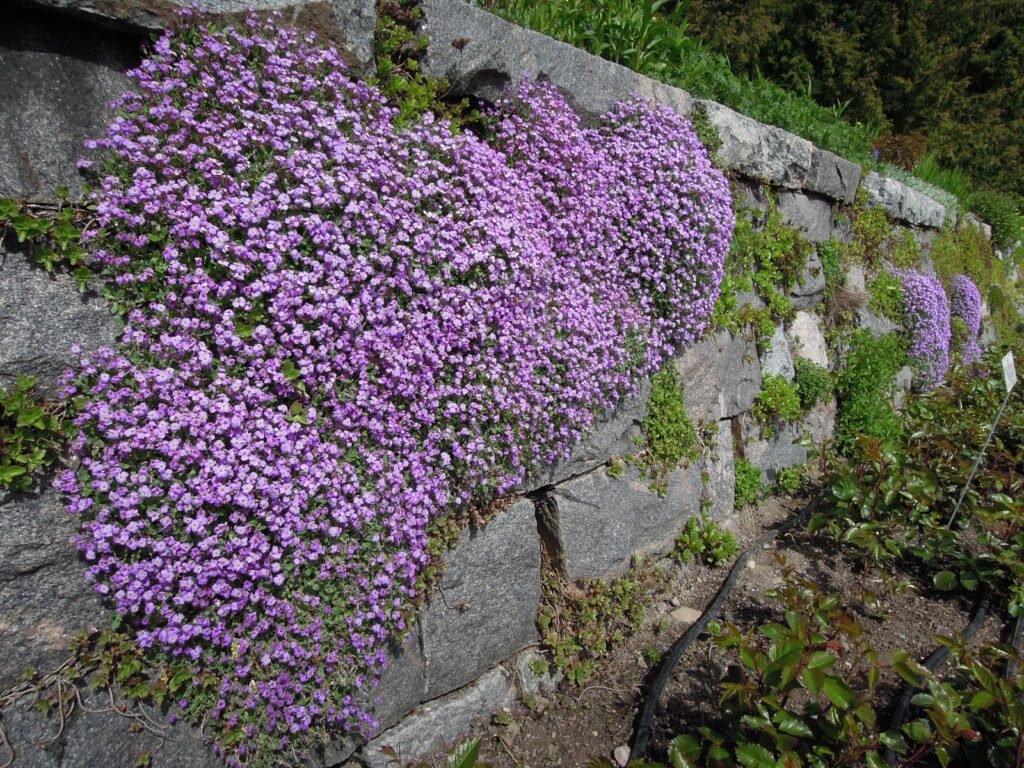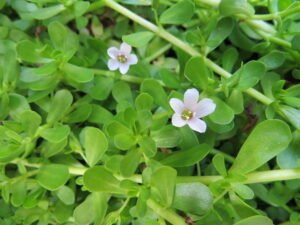Learn How To Grow And Care For Creeping Thyme

Creeping Thyme also known as Breckland Thyme, Wild Thyme, Mother of Thyme and Elfin Thyme is a low growing species of flowering plants. If you’re looking for a low-maintenance ground cover plant that adds beauty and fragrance to your garden, then look no further than Creeping Thyme. In this guide, we will walk you through the steps to successfully grow and care for Creeping Thyme.

Some Interesting Facts About Creeping Thyme
Thymus Praecox or Thymus Serpyllum? Creeping thyme is native plant of Northern Europe, Northern Africa and Western Asia. Scientific name of creeping thyme is Thymus praecox. It’s common name is mother of thyme, but “creeping thyme” and “wild thyme” may also be used where Thymus serpyllum is not found which also shares these names. Creeping thyme is a species of flowering plants in the mint family Lamiaceae. This evergreen flowering plant is used as ornamental groundcover in gardens. It can be grown between pavers as beautiful ground cover display.
Creeping thyme have spicy fragrance and its tiny leaves and flowers are aromatic. It attracts honey bees and butterflies.
Creeping thyme blooms in late springs and its bloom lasts till early summers. It have tiny tubular flowers which are pinkish purple in color.
Creeping Thyme will grow between 2-3 inches in height and it can spread to nearly 1 foot wide when it is well established.
Some Commonly Asked Questions About Creeping Thyme
Is Creeping Thyme Poisonous?
Creeping thyme is not toxic, and in fact its leaves and blooms are edible but it is rarely used as culinary herb unlike some other thyme plants like Thymus vulgaris; which is used to flavor foods and as medicinal herb.
Where does creeping thyme grows best?
Creeping thyme grows best in abundant sunlight. it can tolerate partial shade but for overall growth and blooming it requires 6-8 hours of sunlight daily.
Is Creeping Thyme An Annual Or Perennial?
Thymus praecox or creeping thyme is a perennial shrub. It grows best in temperate climates and may loose leaves in harsh winters but plant grows back quickly in spring. One drawback of creeping thyme is it is woody shrub and can become woody over time and may die. Usually life span of creeping thyme original plant is about three to five years. But no worries as it is self seeder and can grow next generation of plants on its own. You can trim back its woody stems from time to time to keep it looking healthy.
How long does it take to grow creeping thyme?
Creeping thyme have medium growth rate and it takes nearly one year or season to establish itself. Once established it spreads rapidly in width and will cover the gaps and open space in next season. Creeping thyme is not invasive and can be easily maintained once established.
Can Creeping Thyme Tolerate Foot Traffic?
Creeping thyme is amazing ground cover plant that can tolerate light foot traffic but heavy foot traffic will cause it damage. It is better than grass as it blooms and adds color to your ground cover but it is advised to add stones or pavers to keep it healthy if foot traffic is high.
How To Grow Creeping Thyme
Choosing the Right Location
Creeping thyme thrives in full sun but can tolerate some shade. It prefers well-draining soil and one good thing about creeping thyme is it is drought-tolerant once established. Before planting, choose a location in your garden that receives at least 6 hours of direct sunlight per day. Select an area in garden that is free from waterlogging and have overall good drainage.
Preparing the Soil
Prepare the soil before planting creeping thyme by removing any weeds or grass from the area. Loosen the soil. work on the soil to a depth of about 6 inches. And mix in some organic matter such as compost or well-rotted manure in soil. This will improve the soil’s fertility and drainage, creating an ideal growing environment for the thyme. Creeping thyme prefers neutral to alkaline soil PH and it does best in sandy loam soil which have good water drainage quality. Creeping thyme does not grow well in clay soil that can become waterlogged.
Planting Creeping Thyme
Creeping thyme can be propagated from seeds, cuttings, or by dividing an existing plant. If starting from seeds, sprinkle them directly into the prepared soil and lightly cover them with a thin layer of soil. Water gently to keep the soil moist until the creeping thyme seeds germinate. Creeping thyme seeds germinates in 14 to 21 days and seed grown plants takes 90 to 180 days to reach maturity.
If using cuttings, take 3-4 inch long stem cuttings from a healthy thyme plant. Remove the lower leaves and plant the cuttings in a well-draining potting mix. Keep the soil moist and place the pot in a warm and bright location until the cuttings root.
How To Care For Creeping Thyme
Watering and Fertilizing
Creeping Thyme is a drought-tolerant plant, so it requires minimal watering once established. Water deeply, but allow the soil to dry out between two watering. Overwatering in creeping thyme plants can lead to root rot and other fungal diseases. Fertilizing is generally not necessary for Creeping Thyme, as it can thrive in nutrient-poor soil. However, if you wish to fertilize, use a balanced organic fertilizer sparingly in early spring.
Pruning and Maintenance
One of the great things about Creeping Thyme is its low-maintenance nature. However, regular pruning can help to keep the plant tidy and encourage new growth. After the plant finishes blooming, trim it back lightly to remove spent flowers and promote bushier growth. Avoid cutting back too much of the plant, as this can damage it.
Dealing with Pests and Diseases
Creeping Thyme is generally resistant to pests and diseases. However, occasionally aphids or spider mites may attack the plant. If you notice any signs of infestation, spray the plant with a gentle insecticidal soap or use a strong blast of water to dislodge the pests. Be sure to inspect the plant regularly to catch any issues early on.
With its vibrant flowers, delightful fragrance, and numerous benefits, Creeping Thyme is a must-have for any garden. By following the steps outlined in this guide, you can easily grow and care for this versatile herb. Remember to choose a sunny location, prepare the soil properly, and provide adequate water and drainage. With a little maintenance, you’ll enjoy the beauty and benefits of Creeping Thyme for years to come.
Tags: #Creeping Thyme Plant Care, #How To Care Creeping Thyme Plant, #How to Grow Creeping Thyme Plant, #Creeping Thyme plants care for beginners, #Creeping Thyme Plant care tips, #AmazeGarden.Com, #Plants Care Tips, #Gardening, #Kitchen Gardening, #Terrace Gardening, #Backyard gardening, #Container Gardening, #Urban Gardening, #plants Care, #Creeping Thyme Flower Care, #Creeping Thyme Flower Care Tips, #Creeping Thyme Care
To Get Latest Gardening News, Tips and Tricks Subscribe Our Newsletter !









